Top 10 Most Beautiful Historical Sites in Georgia
Georgia is a crossroads between Asia and Europe. Although it may still be a little-known European country, it is by no means lacking in its beauty and natural ... read more...attractions. In addition to bridging two continents, the country is also famous for its mountains and beautiful beaches on the Black Sea. The country holds various historical treasures that attract a large number of tourists from all over the world. Toplist's article has listed the most beautiful historical sites in Georgia that you can visit when traveling to the ends of this European continent.
-
The historical District Of Tbilisi is an example of Georgia's rich urban legacy, in which an intriguing process of foreign influences' reception, creative alterations, and adaptations to housing has occurred throughout the years. Georgian customs and architecture can still be found. Tbilisi, Georgia's fifteenth-century capital, was severely influenced by the main factor defining a feature of the original national culture - Georgia's geopolitical position at the intersection of Europe and Asia with all its consequential historical conditions - which is reflected in its unique artistic and architectural integrity.
The city's foundations, along with the feudal period's spontaneously evolving urban structure, the 19th century's conventional planning, and the buildings of the "Stalin period" (already the past heritage), all combine to form a complex city body that reflects its diverse periods of history, united by its unique "Tbilisi spirit" and, despite some extractive characteristics, certain centrality, combining it into an indivisible whole.
The main determinant of the city's architectural aspect - the unique and characteristic "Tbilisi spirit" of residential houses - was formed in its community, imbued with its distinctive features; these houses, with their long traditional house style, set the stage for the emergence not only of a multicultural way of life and tastes, freedom and tolerance in religious devotion, united by "Georgian habits and behavior," open-minded residents of Tbilisi. These buildings exhibit an incredible range of national artistic originality, reflected in spatial-compositional and artistic features, in addition to the utilitarian excellence of traditional dwellings.
Balconies and courtyards, which are common features of traditional southern homes, are transformed into inseparable elements of Tbilisi homes, where the building materials are identical - wood and brick - and fully exposed. The intriguing "Tbilisian" "open house" model is based on the connection of courtyards and balconies to the street. A balcony has experienced an unusual transformation in its adaptation to traditional European-style facades; similarly, courtyards have entered Art Nouveau structures, contributing to the iconic "Tbilisian" patterns. The historical District Of Tbilisi is the most beautiful historical site in Georgia.
Location: Tbilisi
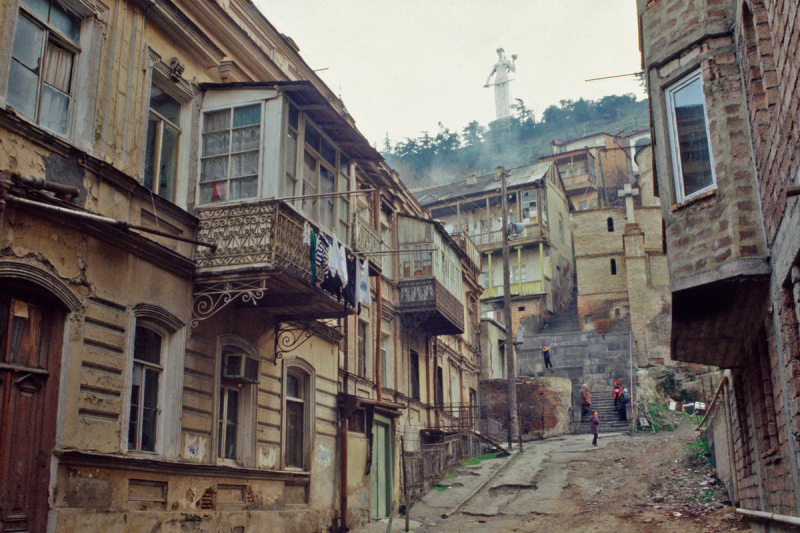
Photo: https://www.wmf.org/ 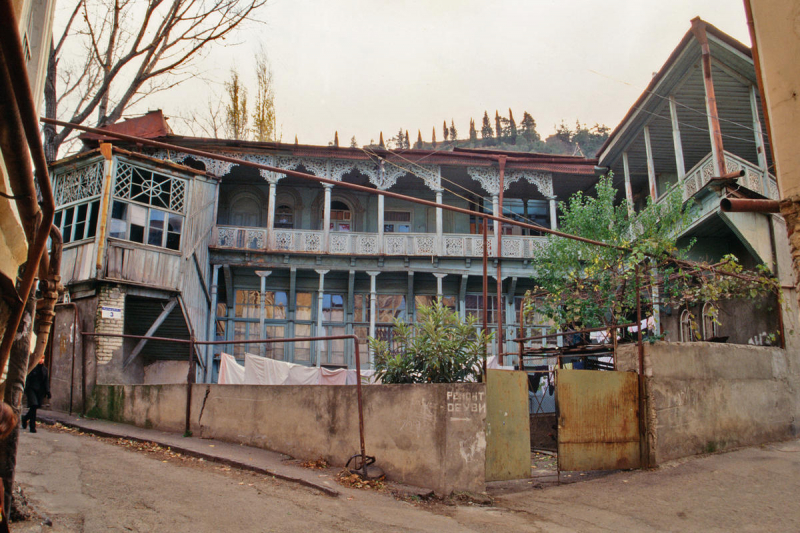
Photo: https://www.wmf.org/ -
Tbilisi, Georgia's capital, and the Mtkvari (Kura) river are visible from Narikala, a historic fortification. Between the sulfur baths and the Tbilisi botanical garden, the fortification is divided into two walled portions. The church of St Nicholas, which was recently restored, is located downstairs. It was rebuilt in 1996–1997 to replace a 13th-century church that had been damaged by fire. The new church is of the "regulatory cross" design, with three sides of entrances. The church's interior is adorned with murals depicting scenes from the Bible and Georgia's history.
It was created by King Vakhtang I Gorgasali of the old Iberian Kingdom, according to mythology. Archaeological studies in the area, however, have proven that humans first arrived in Tbilisi's territory in the 4th millennium BC. The first recorded records of the site's settlement originate from the second half of the fourth century AD when King Varaz-Bakur erected a fortification (circa 364). The castle fell to the Persians around the end of the 4th century but was regained by the Kartli rulers in the mid-5th century. The Umayyads in the 7th century and King David the Builder (1089-1125), respectively, considerably expanded it. It was dubbed "Narin Qala" by the Mongols (ie "Little Fortress"). The majority of the defenses that have survived come from the 16th and 17th centuries. Parts of the fort were damaged by earthquakes in 1827 and were eventually dismantled. Narikala Fortress is the second most beautiful historical site in Georgia.
Location: Tbilisi
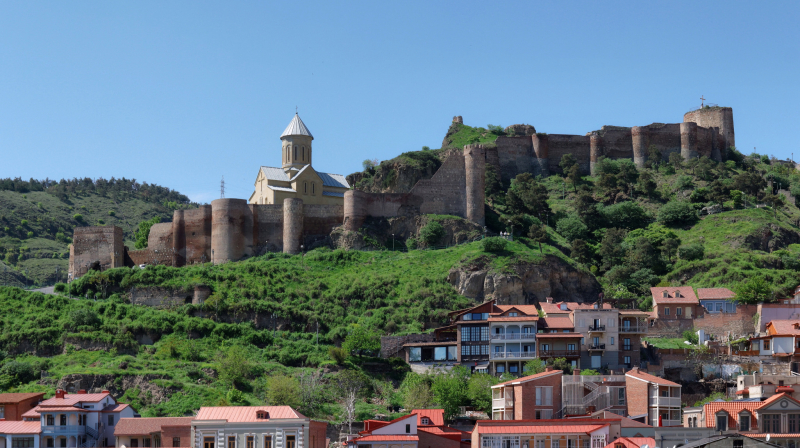
Photo: https://static.thousandwonders.net/ 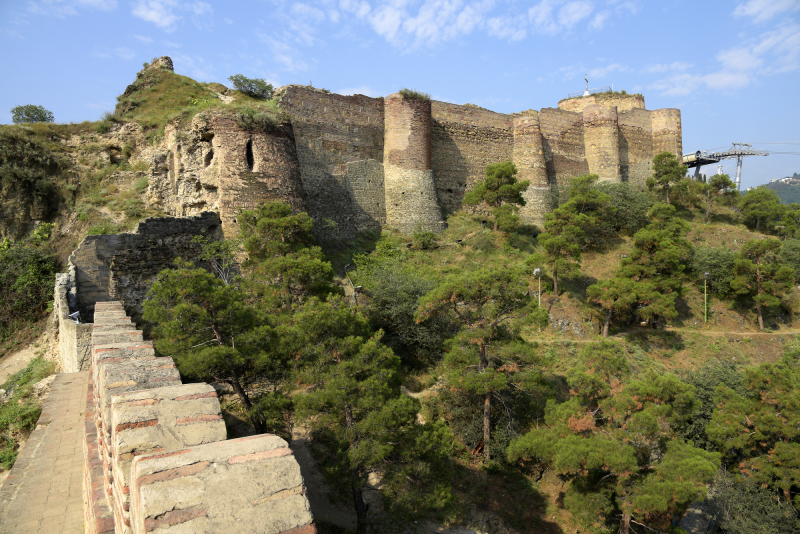
Photo: https://global-geography.org/ -
The Mtatsminda Pantheon of Writers and Public Figures is a cemetery in Tbilisi, Georgia, that contains the graves of some of Georgia's most famous writers, artists, scholars, and national heroes. It was officially founded in 1929 in the churchyard around the Church of St David "Mamadaviti" on the slopes of Mtatsminda Mountain. Mtatsminda Park, a municipal amusement park in Tbilisi, is located at the summit of the mountain.
The Russian writer Alexander Griboyedov (1795–1829) and his Georgian wife Nino Chavchavadze (1812–1857) were the first renowned persons to be buried here. The Pantheon was dedicated in 1929 to commemorate the centennial of Griboyedov's death in Russia while serving as ambassador. The Pantheon is seen as a symbol of Georgia's common identity. Several notable Georgians have been buried or reburied there since then. The Pantheon is run by the Tbilisi government and is visited by both locals and visitors.
The idea for such an estate originally came to Georgians' imaginations during the funeral of Akaki Tsereteli in 1915, but it was not carried out until 14 years later, in 1929. Great statesmen such as Ilia Tchavchavadze, Ekvtime Takaishvili, Kakutsa Cholokhashvili, Vazha Pshavela, Galaktion Tabidze, Nikoloz Baratashvili, Jacob Nikoladze, and others have gone away. Being buried at the Mtastminda Pantheon is a symbol of tremendous government and country honor, gratitude, and thanksgiving to those who have sacrificed all for their country and given their lives. Aside from the funeral service, you can enjoy an unforgettable scenic view of the city from this vantage point. Alternatively, you might pay a visit to the Church of Mtatsminda Father David, which is one of the city's most prominent churches.
Location: Tbilisi, Georgia
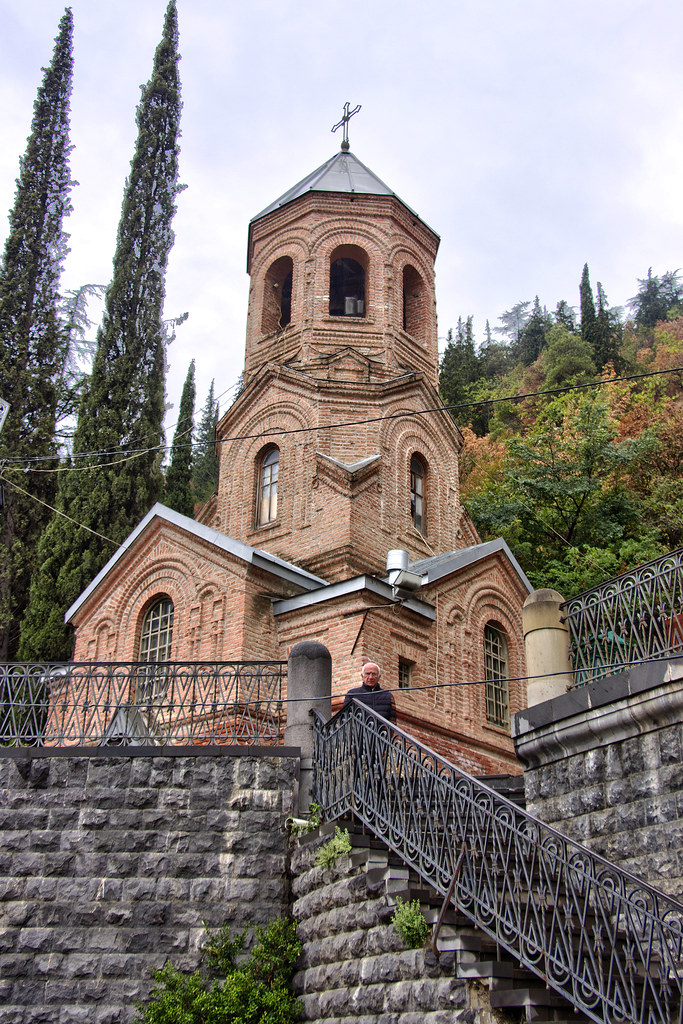
Photo: https://live.staticflickr.com/ 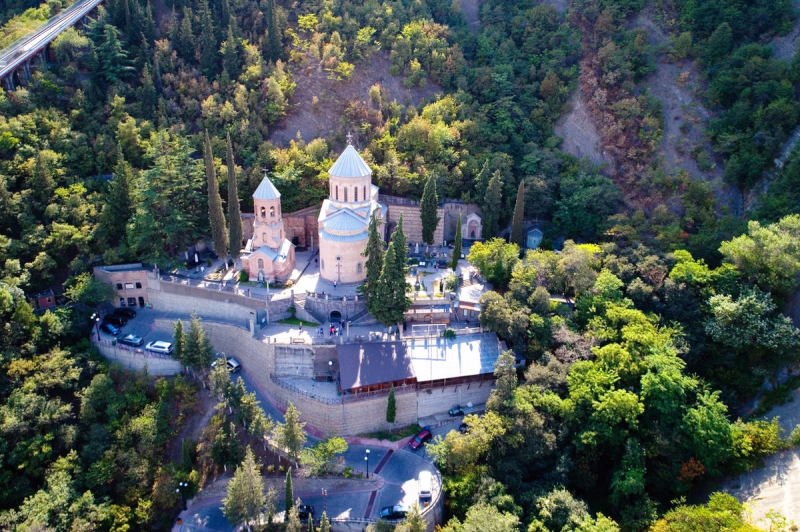
Photo: https://img.itinari.com/ -
The only cross-domed church in Khevi province, Gergeti Trinity Church, was erected in the 14th century by an unknown architect. The independent bell tower dates from around the same time as the church, but it was constructed later. It has become a symbol for Georgia due to its remote location on a steep mountaintop surrounded by the vastness of nature. In times of danger, important relics from Mtskheta, including the Cross of Saint Nino, were carried here for security, according to 18th-century Georgian author Vakhushti Batonishvili. All religious services were outlawed during the Soviet era, but the church is still a popular tourist destination. The Georgian Orthodox and Apostolic Church have established the church as an active establishment.
Hikers in the vicinity flock to the church, which is accessible after a 1.5-hour difficult journey up the mountain. Gergeti Trinity Church is located in the beautiful Georgian town of Gergeti. The church stands alone at the summit of Mount Kazbek, surrounded on all sides by rugged mountain ranges. Gergeti Trinity Church is associated with interesting stories and folklore among Georgians. Hitchhiking to Tusheti on one of the world's most dangerous highways! The legend is similar to that of Prometheus in Greek mythology; it is said that gods imprisoned a hero named Amirani here for taking fire from them and giving it to humanity. Despite its simple structure and isolated presence, the church is a famous visiting spot by mountaineers and tourists who find themselves compelled to this place thanks to the tales and legends. Does it call you?
Location: Stepantsminda village, Georgia
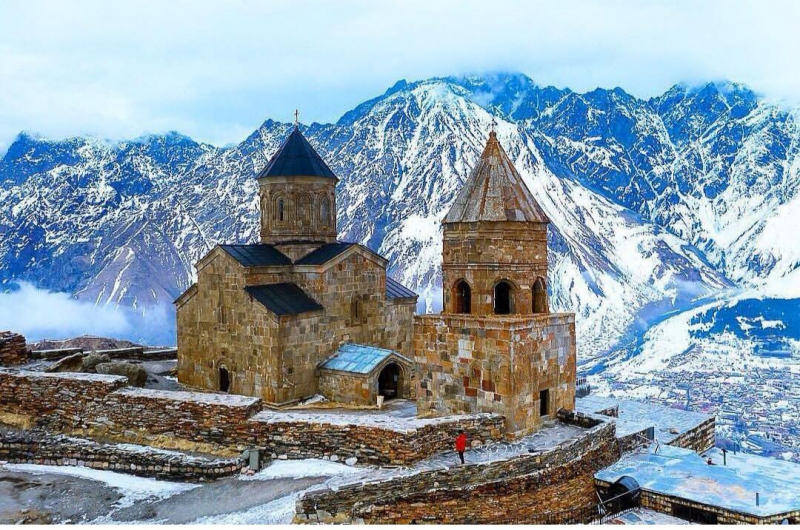
Photo: https://i.redd.it/ 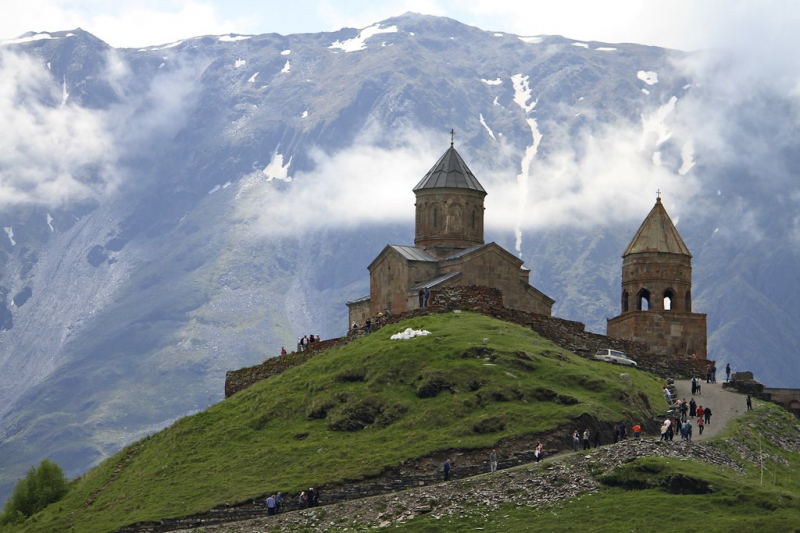
Photo: https://c2.staticflickr.com/ -
Gremi Church of the Archangels and Royal Tower is a 16th-century architectural monument in Kakheti, Georgia, consisting of the royal fortress and the Church of the Archangels. The ruins of the once-thriving town of Gremi can be seen southwest of the modern-day settlement of the same name in the Kvareli district, about 115 kilometers east of Tbilisi, Georgia's capital.
Gremi Church, which was built in 1565 and is noted for its well-preserved architectural structures from the late medieval period, such as a three-story bell tower, is located in Gremi city. The structure previously included a citadel that looked out over the city, but it was demolished by a local king in the seventeenth century.Gremi Church is built in the cruciform architectural style, which was popular in medieval Orthodox Christianity. Iranian architectural influences can also be seen in the domed church and bell tower. The church is still operational, and there is a tiny museum adjacent to the structure where you may learn about the church's fascinating history. The Archangels' Church and Royal Tower in Gremi is Georgia's seventh most beautiful historical site.
Location: Kakheti, Georgia
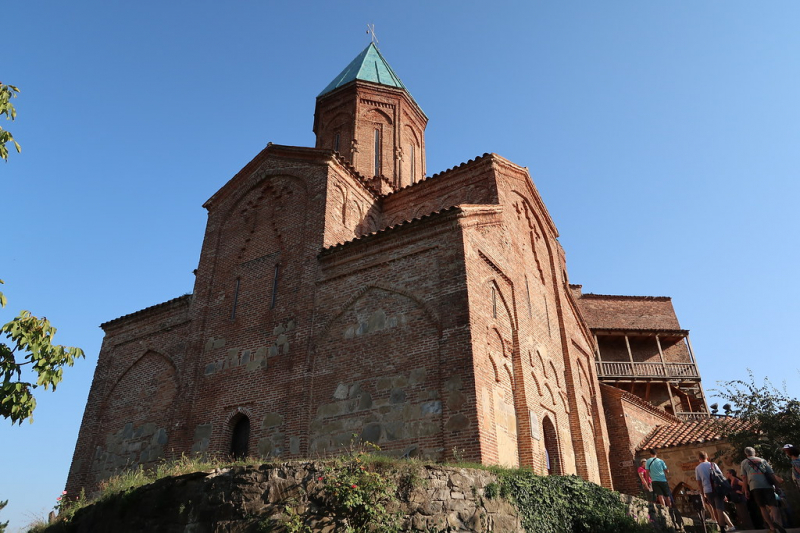
Photo: https://live.staticflickr.com/ 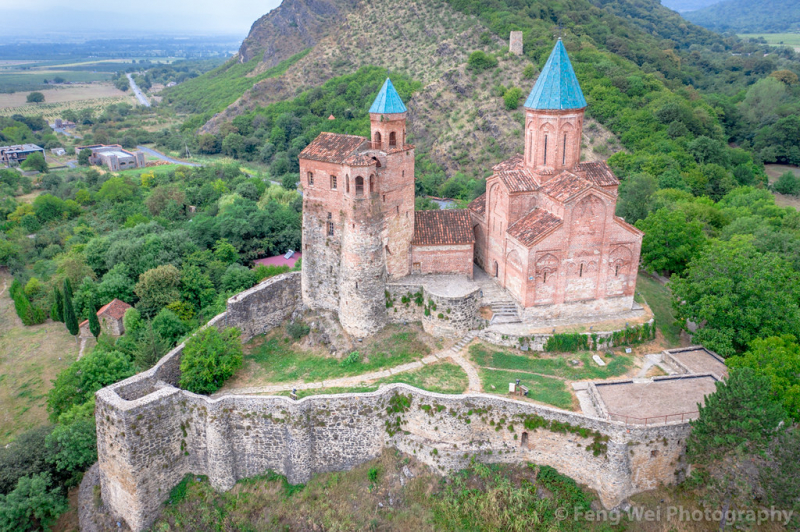
Photo: https://live.staticflickr.com/ -
Gelati Monastery is a medieval monastic complex near Kutaisi in the Imereti region of western Georgia. One of the first monasteries in Georgia, it was founded in 1106 by King David IV of Georgia as a center of monasticism and education.
The monastery is an epitome of Georgia's Golden Age and the gold aesthetic used in the paintings and buildings. It was built to celebrate the Orthodox Christian faith in Georgia. Some of the murals found inside the Gelati Monastery church date back to the 12th century. The monastery was inscribed as a UNESCO World Heritage Site in 1994 for its striking architecture and importance of the site. It was a center of education and science in medieval Georgia.
The entire structure is based on "Golden Ratio" mathematics, resulting in an aesthetically pleasing aesthetic that is enhanced by triptychs and mosaics throughout the church. The Byzantine elements in the church's architecture and decor recall a golden phase of Georgian architecture when Christianity reigned supreme. Make a point of visiting this Medieval scientific and educational center while in Georgia.
Location: Imereti region, western Georgia.
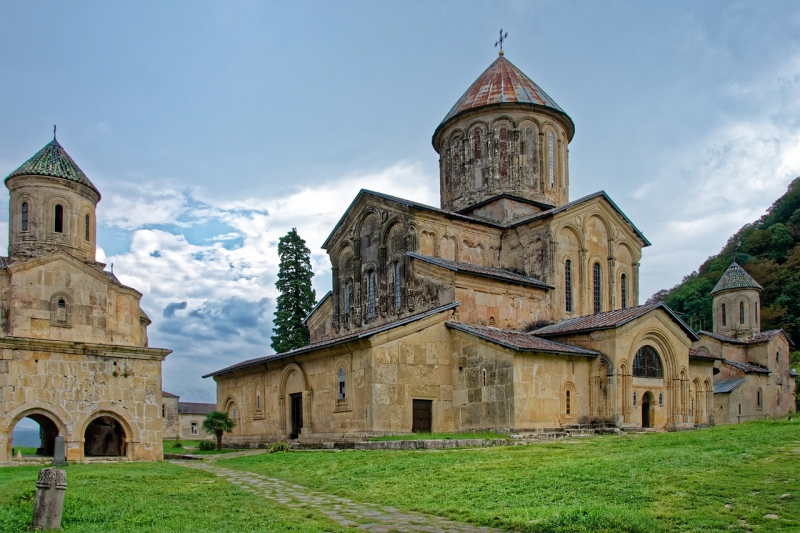
Photo: https://www.needpix.com/ 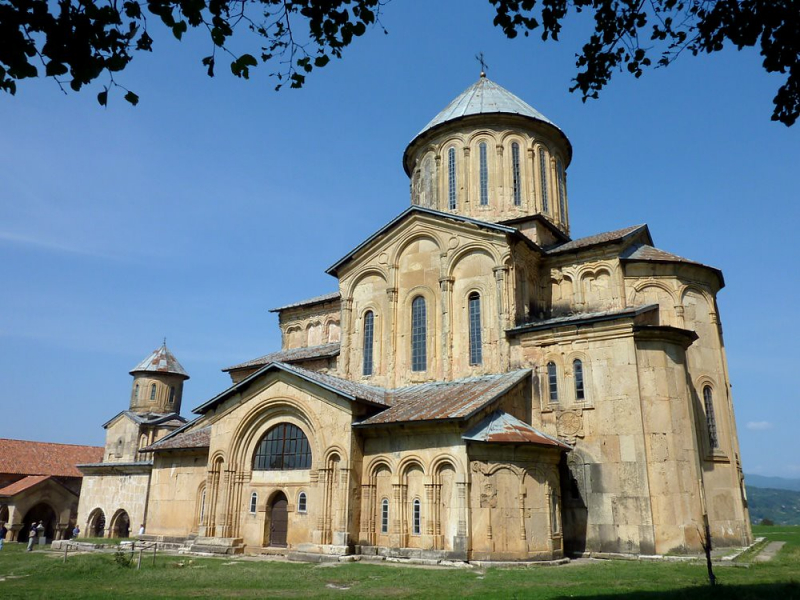
Photo: https://farm6.staticflickr.com/ -
Within David Gareja's monastic complex, Davit Gareja Lavra is a historical and architectural landmark. Under the direction of San David Gareja, it was constructed in the first half of the sixth century. Davit Gareja Lavra is a cave monastery in the Kakheti region near Tbilisi that is one of Georgia's oldest surviving ancient monuments. The complex is made up of 22 tiny monasteries that are connected in a network across a distance of 25 kilometers (15 miles). An Assyrian monk who came to Tbilisi to preach Christianity constructed the monastery complex in the sixth century.
In the twelfth century, the monastery was also recognized as the cultural hub of the Georgian Kingdom, serving as a border guard and military training grounds. Davit Gareja Lavra is the seventh most beautiful historical site in Georgia.
Today, the monastery attracts thousands of visitors every year for various reasons. Some visit the monastery to pay pilgrimage to the remains of Davit, the Assyrian monk, while others are attracted to the place’s historical significance and natural beauty.Location: Kakheti Region
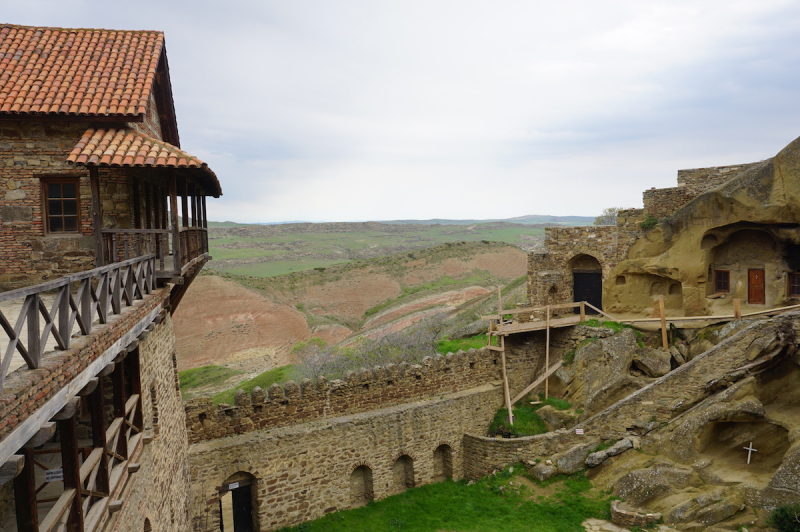
Photo: https://viermalfernweh.de/ 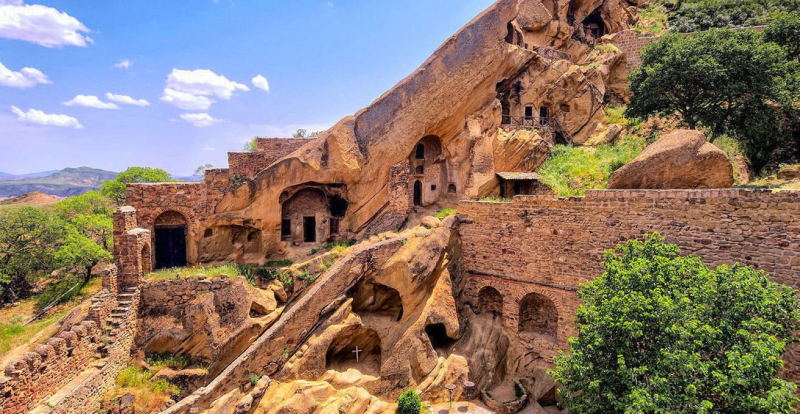
Photo: https://kartvelitours.com/ -
Vardzia Cave Monastery is a cave monastery site in southern Georgia, excavated from the slopes of Mount Erusheti on the left bank of the Kura River, thirty kilometers from Aspindza. The main construction period is the second half of the 12th century. The caves stretch along the cliff for about five hundred meters and up to nineteen floors. The monastery was an important cultural center, a place of important literary and artistic works. The Dormition Church, dating from the 1180s during the heyday of Tamar and Rustaveli, has a series of important murals. The site was largely abandoned after the Ottoman takeover in the sixteenth century. Now part of a state heritage reserve, the extended area of Vardzia -Khertvisi has been submitted for inclusion on the future UNESCO World Heritage List.
Without a doubt, the Vardzia cave monastery is one of the most intriguing historical sites that you will visit in Georgia. The cave monastery and underground fortress seem surreal to the eyes as if the structure was built by a bunch of dwarfs. The monastery was built for the Georgian queen to escape the ongoing slaughter by the Mongols during the twelfth century. Vardzia served as a sanctuary for the queen with its 13 underground levels, containing over six thousand apartments along with a throne room and a bell tower.
Location: Southern Georgia
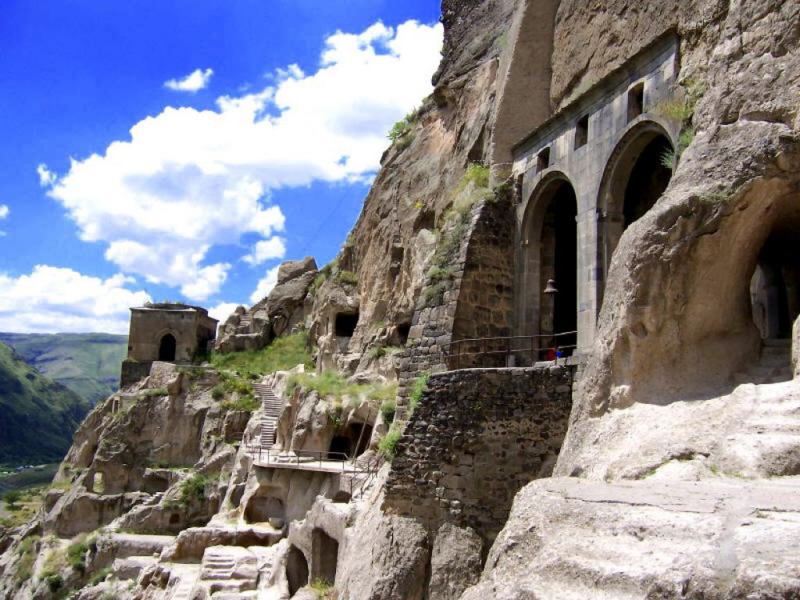
Photo: https://img.gagdaily.com/ 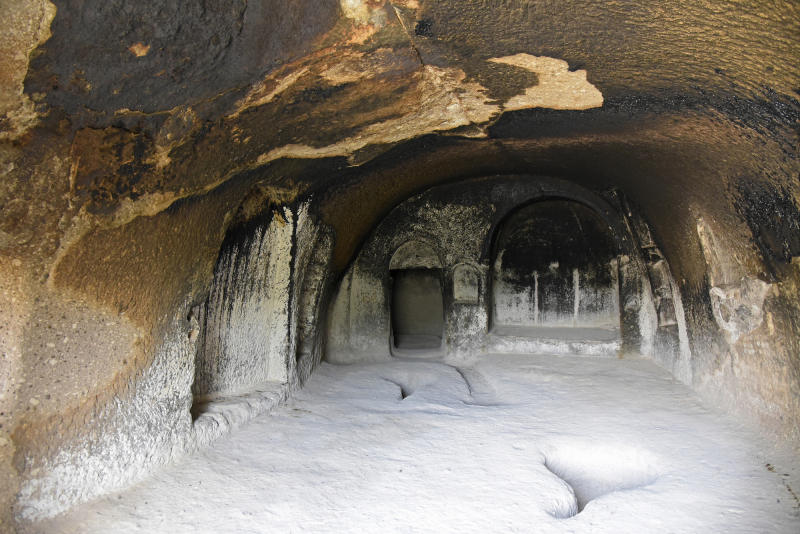
Photo: https://austria-forum.org/ -
Alaverdi is Georgia's highest cathedral (up to 50 meters). It stands in a rich river valley against the backdrop of the Caucasus Mountains, dominating the surrounding landscape. It's a rectangle with three apses engraved on it. On the second tier of the side naves in the western half of the building, there are galleries. The cathedral's interior is colossal in scale. Outside, the Cathedral is free of ornamentation, although the facades contain huge blind arches and niches for adornment, lending the structure a majestic and melancholy aspect. Fieldstone is used for the walls, which are topped with hewn slabs of shirimi water tuff that are now extensively worn. An area enclosed by a fortified wall contains dwelling houses, the refectory of the monastery, wine cellars, baths, and other structures.
You definitely do not want to miss out on seeing one of Georgia's tallest cathedrals. Alaverdi Cathedral, in the Kakheti region of Georgia, dates from the 6th century and was built by Kvirike III of Kakheti. During the 11th century, the cathedral was extended and became a component of the Georgian Orthodox monastery.
The cathedral is dominated by vast landscapes in its backdrop, with its interior embellished with Medieval and Catholic décor, attracting many tourists yearly to marvel over this beauty. Alaverdi Cathedral is the ninth most beautiful historical site in Georgia
Location: the town of Telavi in the Alazani-River
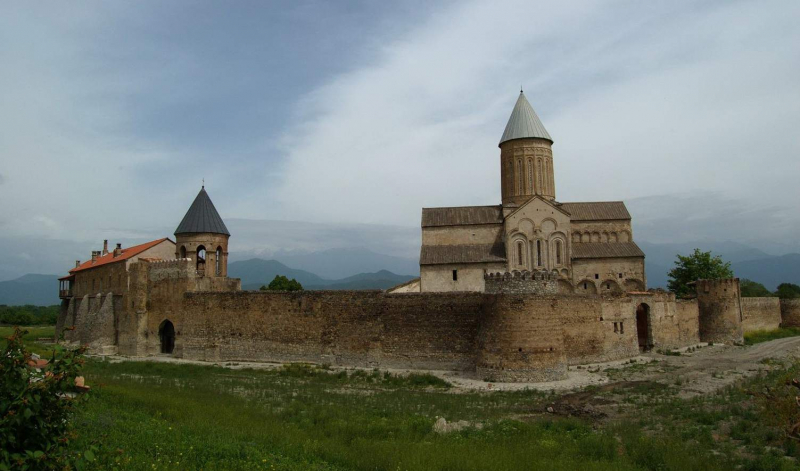
Photo: https://www.georgia-tours.eu/ 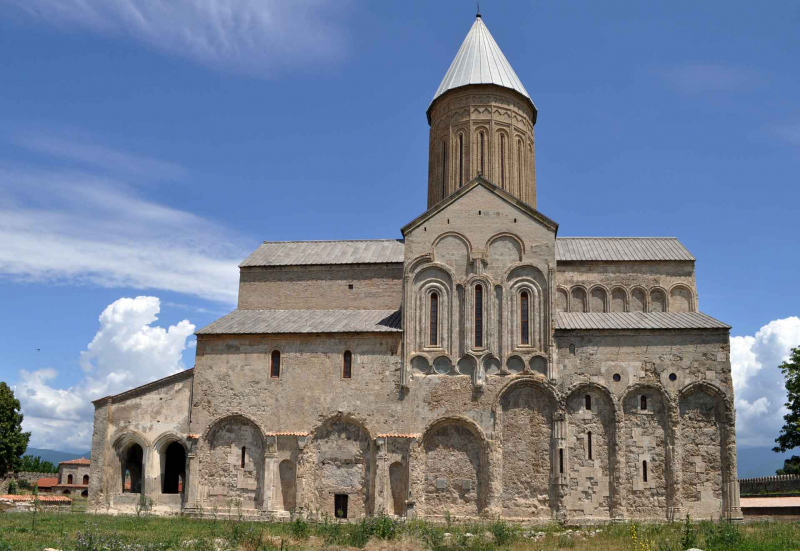
Photo: https://atinati.com/ -
Shatili is a small ancient town founded around the 12th and 13th centuries on the border between Georgia and Chechnya. Located in the Arghuni Gorge some 1,400 meters deep, the village is truly a unique complex of medieval to early modern fortresses and fortified houses of stone and mortar, which functioned both as a residential area that is both a fortress guarding the northeastern suburbs of the country. The fortress consists of terraced structures mostly flat-roofed houses and about 60 towers gathered together to create a single chain of fortifications.
The houses in the village are built from slate stones collected from the surrounding areas and stacked on each other. All the houses and towers in Shatili village are connected via doorways, building an interconnected network.
The fact that Shatili is located in Arghuni Valley, which is the gateway to Georgia, adds to the structural significance of the interconnected homes. The invasion was fought off by using the connected houses as a fortress. The community is still home to a few residents who make a living from agriculture and tourism. It's no surprise that Shatili is in the top 10 of the most beautiful historical sites in Georgia.
Location: Upper Khevsureti province
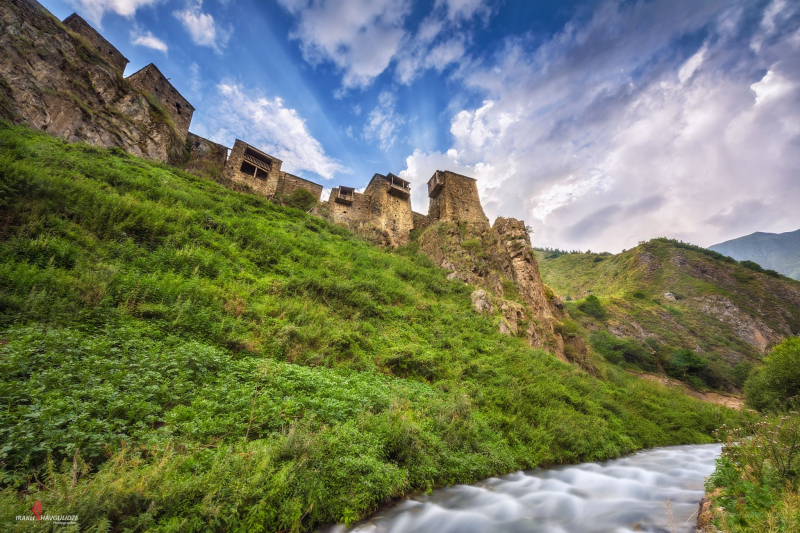
Photo: https://i.pinimg.com/ 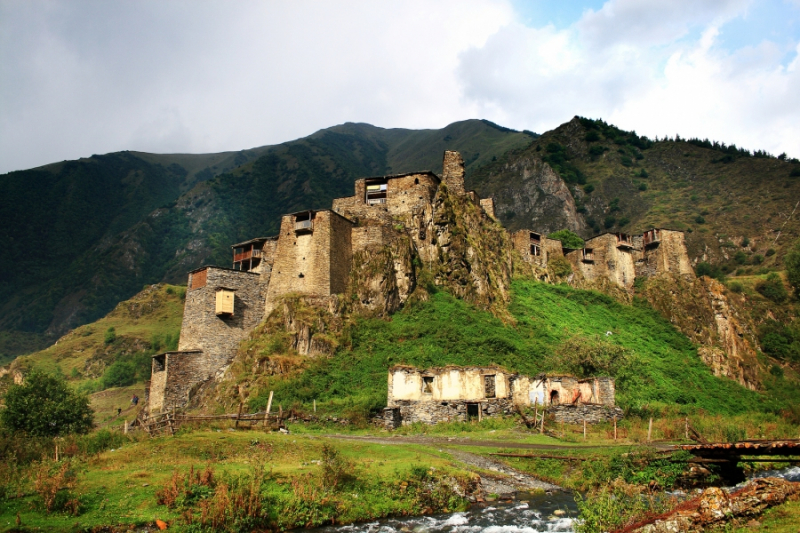
Photo: https://otg.ge/































